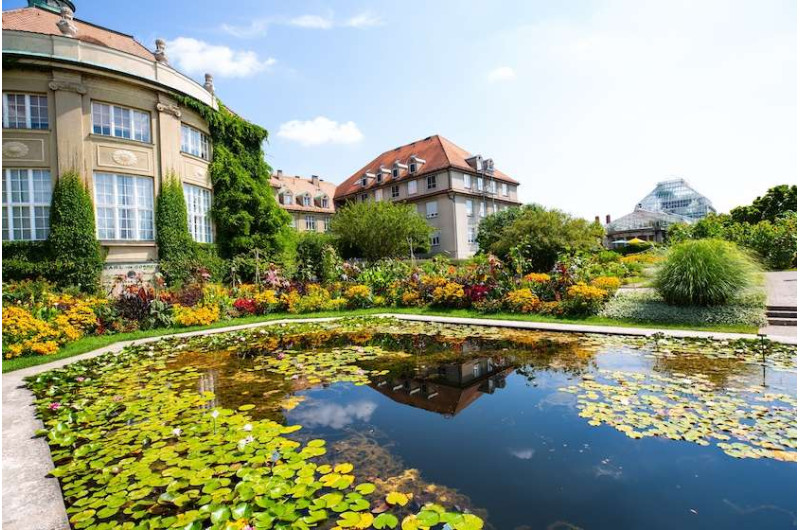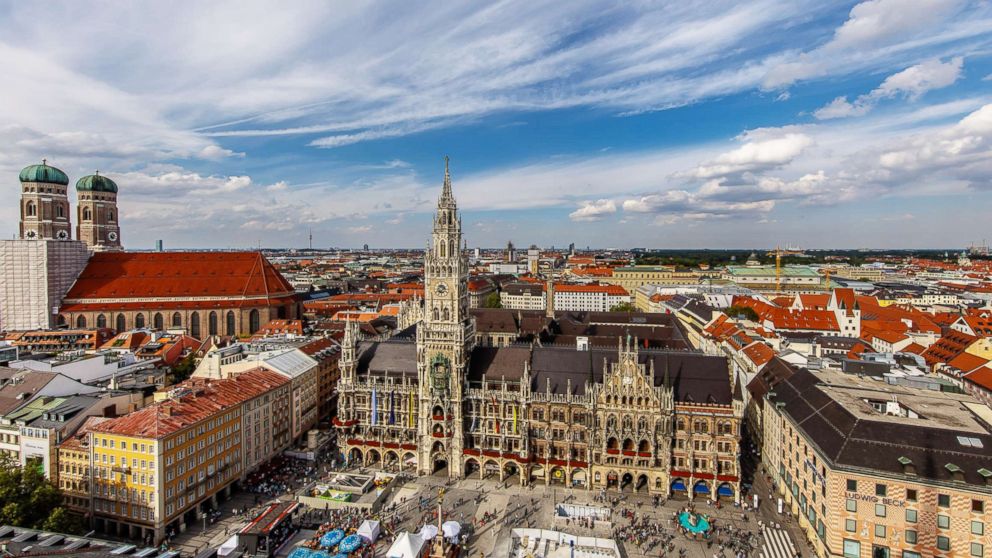Munich rewards travelers who take their time. The perfect week here is not about checking off landmarks; it is about absorbing the rhythm of a city that values balance, between beer gardens and museums, history and modernity, structure and spontaneity. The concrete answer: spend seven full days, dedicating two to the historic core, two to culture and nature, one to a day trip, and two to slower neighborhood exploration. That pace lets you truly feel Munich instead of racing through it.
Day 1: Marienplatz and the Historic Core
Begin at Marienplatz, the city’s heart for more than 800 years. Watch the Glockenspiel at 11 a.m. from the Neues Rathaus tower before walking toward Viktualienmarkt, where you’ll catch the pulse of local life. Stalls brim with regional cheeses, sausages, and fruit from nearby farms. Lunch at Andechser am Dom or Schneider Bräuhaus keeps things traditional without being touristy.
Later, wander into Frauenkirche, the city’s landmark twin-domed cathedral, and the hidden Asamkirche, one of Munich’s most ornate Baroque treasures. Close the day with coffee and pastries at Café Frischhut, then a slow evening stroll toward Karlsplatz, where street performers mark the city’s transition from workday to weekend energy.
Day 2: Museums and the English Garden
Your second day belongs to art and nature. The Kunstareal district hosts three major museums: the Alte, Neue, and Pinakothek der Moderne. Choose one or two, trying to visit all three in one day only dulls the experience.
Lunch at Ella or Vorhoelzer Forum Café, which offers rooftop views over Munich’s skyline, and then rent a bike to explore the English Garden. Locals surf the Eisbach wave year-round; watching them is pure Munich. End your ride at Seehaus am Kleinhesseloher See, where you can dine lakeside among locals unwinding after work.
Day 3: Nymphenburg Palace and Botanical Gardens

Take tram 17 to Nymphenburg Palace, the former summer residence of Bavarian royalty. Its mirrored halls and carriage museum showcase the elegance of an era when horses were status symbols. Walk through the vast palace park and then continue into the Botanical Garden, a living museum with over 14,000 species. Lunch at the garden café feels far from the city crowds. In the evening, try dinner in Neuhausen, a district filled with family-owned taverns and a neighborhood calm, missing from central Munich.
Day 4: Neuschwanstein or Lake Starnberg
Set aside this day for an excursion. Neuschwanstein Castle, about two hours away, is a fairytale cliché that earns its reputation when seen in morning light. If you prefer something more peaceful, take the train to Lake Starnberg, where Munich’s elite have long kept summer villas. The lakeshore trails and clear water offer a slower escape.
Return to the city for dinner and a relaxed walk along the Isar River, a favorite spot where locals gather at dusk with beer and guitars.
Day 5: Local Life in Glockenbachviertel
Midweek is ideal for discovering Munich’s social side. The Glockenbachviertel blends independent cafés, boutiques, and a lively, open-minded community. Stop by Aroma Kaffeebar for an espresso and people-watching, or browse the boutiques on Reichenbachstrasse.
For a more personal look into Munich’s contemporary lifestyle, local guides and social circles often point out how this area reflects the city’s mix of discretion and connection. Even cultural and companionship platforms such as Louisa illustrate how Munich’s social life values authenticity and comfort over excess, a reflection of the same understated elegance seen in its architecture and traditions. This perspective helps visitors understand that Munich’s charm extends beyond its monuments into the quiet sophistication of its daily interactions.
Dine nearby at Wirtshaus in der Au, where dumplings come in every form imaginable.
Day 6: BMW Welt, Olympiapark, and Schwabing
Shift gears toward innovation. BMW Welt and the adjacent museum highlight Germany’s legacy of engineering excellence. Even those uninterested in cars appreciate the architectural style, steel curve, and glass reflections symbolizing motion itself.
Walk across to Olympiapark, where the 1972 Olympics left behind a futuristic landscape of sweeping roofs and green hills. The Olympic Tower provides one of the best city views. Later, spend the evening in Schwabing, the city’s former bohemian district, where artists once met in smoky cafés. Modern Schwabing blends student energy with quiet affluence ,perfect for dinner at Kaisergarten or Occam Deli.
Day 7: A Gentle Farewell
Keep your last day slow. Visit the Residenz Museum, once home to Bavarian dukes and kings, to end your trip on a regal note. Or wander through Gärtnerplatz and Sendlinger Tor, where small boutiques and flower shops line cobblestone streets.
In summer, relax by the Isar River, where locals sunbathe on pebbled banks or swim in shallow water. It’s Munich at its purest: simple, social, unhurried.
The Midweek Balance Formula
To avoid rushing, plan your week using a simple structure:
| Focus Area | Days Spent | Example Activities |
| City Core | 2 | Marienplatz, Viktualienmarkt |
| Art & Nature | 2 | Museums, English Garden |
| Excursion | 1 | Neuschwanstein or Starnberg |
| Neighborhood Life | 1 | Glockenbachviertel, Schwabing |
| Free Day | 1 | Isar walk, markets, Residenz |
This balance leaves room for curiosity without losing depth.
Food and Drink: Munich on a Plate
Munich’s culinary rhythm reflects its personality, measured and satisfying. Start mornings with Weißwurst and pretzels before noon (as locals do). Lunches are hearty and often outdoors: try Augustiner-Keller for roasted pork or the market stalls for regional specialties.
Evenings bring slow dining, Tantris Maison Culinaire for a fine meal, or Steinheil 16 for schnitzel as large as your plate. The city thrives on contrast: Michelin-star precision and beer hall generosity coexisting without competition.
Practical Ways to Stay Relaxed
- Buy a CityTourCard for unlimited transit and discounts.
- Stay near Lehel or Maxvorstadt, not directly in Marienplatz.
- Walk or cycle between sights whenever possible.
- Book museum slots in advance to skip lines.
- Plan one flexible evening for unstructured exploration.
Munich is best experienced at human speed, assured, observed, and aware of the details that make it timeless.
Conclusion
A week in Munich is about rhythm, not rush. You’ll remember the soft chime of church bells, the hum of conversation in a shaded beer garden, and the sense that the city’s energy never shouts; it hums quietly, confidently. To understand Munich is to slow down, to let the balance between order and spontaneity reveal itself day by day. In that balance lies the real essence of the city, and the secret to seeing it well.

